Accelerating Efficient Installation and Optimization of Battery Energy Storage System Operations Onboard Vessels
Abstract
:1. Introduction
2. Objectives
- Reviewing the actual industrial approach for achieving CO2 emissions reductions, learning from the experiences gained from 500 BESS installations on various vessels, and addressing the issues facing ship owners who wish to install more BESSs without needing government support.
- Presenting BESS practical installation costs and operational results from a 630 kWh BESS retrofitted onto a commercially operating OSV; the annual operational results are used to quantify improvement requirements for future installations and operations.
- Developing new, integrated, optimized operational BESS models by learning from large amounts of collected operational data, accounting for battery degradation and using onshore/offshore green power supply/charging.
- Establishing four scenarios to accelerate BESS uptake and facilitate technological and operational transferability among similar vessels, different vessels across sectors and across regions, and technological advancement through digitalization.
3. Reviewing Industrial Approaches for Reducing GHG Emissions
4. Experiences of Large BESS Installations and Operations
5. Installation and Operation of a 630 kWh BESS
5.1. Installation of a 630 kWh BESS on a Hybrid OSV
5.2. Operations of a 630 kWh BESS on a Hybrid-Electric OSV
6. Suggestions to Unlock BESS Benefits for Ship Owners
6.1. Development of Integrated Optimized DBS Models
6.2. Onshore and Offshore Power Supply and Charging
6.3. Dealing with the Increasing Safety Requirements for Operation of BESSs on Vessels
6.4. Towards Further CO2 Emission Reductions
7. Four Acceleration Scenarios
8. Conclusions
Author Contributions
Funding
Acknowledgments
Conflicts of Interest
Disclaimer
References
- International Maritime Organization (imo.org). Available online: https://www.imo.org/en (accessed on 16 April 2022).
- DNV. Available online: https://www.dnv.com/expert-story/maritime-impact/Batteries-gain-momentum-in-themaritime-sector.html (accessed on 6 August 2021).
- Boveri, A.P.; Silvestro, F.; Molinas, M.; Skjong, E. Optimal Sizing of Energy Storage Systems for Shipboard Applications. IEEE Trans. Energy Convers. 2018, 34, 801–811. [Google Scholar] [CrossRef] [Green Version]
- Optimizing Marine Battery Operations Using 6 Years’ Operational Data from Two Commercially Operating Vessels. Available online: https://www.sintef.no/en/projects/2021/omb6-optimizing-marine-battery-operations/ (accessed on 16 May 2022).
- Failure Mode and Effects Analysis for Classification, Havyard, Document: 12009.408.910.00 FMEA, DNV. ID: D31005. Available online: https://ww2.eagle.org/content/dam/eagle/rules-and-guides/current/design_and_analysis/215_fmea/FMEA_GN_e-Mar18.pdf (accessed on 4 April 2018).
- European Battery Alliance, Internal Market, Industry, Entrepreneurship and SME. Available online: https://ec.europa.eu/growth/industry/policy/european-battery-alliance_en (accessed on 17 May 2022).
- Ioannis, T.; Dalius, T. Li-Ion Batteries for Mobility and Stationary Storage Applications-Scenarios for Costs and Market Growth; EUR 29440 EN; Publications Office of the European Union: Luxembourg, 2018. [Google Scholar]
- Mo, O.; Guidi, G. Optimized use of Energy Charged from Shore in Plug-in Hybrid Marine Vessels. J. Physics Conf. Ser. 2019, 1357, 012023. [Google Scholar] [CrossRef] [Green Version]
- Mo, O.; Guidi, G. Design of Minimum Fuel Consumption Energy Management Strategy for Hybrid Marine Vessels with Multiple Diesel Engine Generators and Energy Storage. In Proceedings of the 2018 IEEE Transportation Electrification Conference and Expo (ITEC), Long Beach, CA, USA, 13–15 June 2018; pp. 537–544. [Google Scholar]
- He, W.; Byklum, E. MDemo (Two Offshore Multi-Use Pilot Demonstrators), Submitted on 23 January 2019 under EU H2020 “Blue Growth H2020-BG-2018-2020, BG-05-2019: Multi-Use of the Marine Space, Offshore and Near-Shore: Pilot Demonstrators”. 2019. Available online: https://ec.europa.eu/info/funding-tenders/opportunities/portal/screen/opportunities/topic-details/bg-05-2019 (accessed on 20 May 2022).
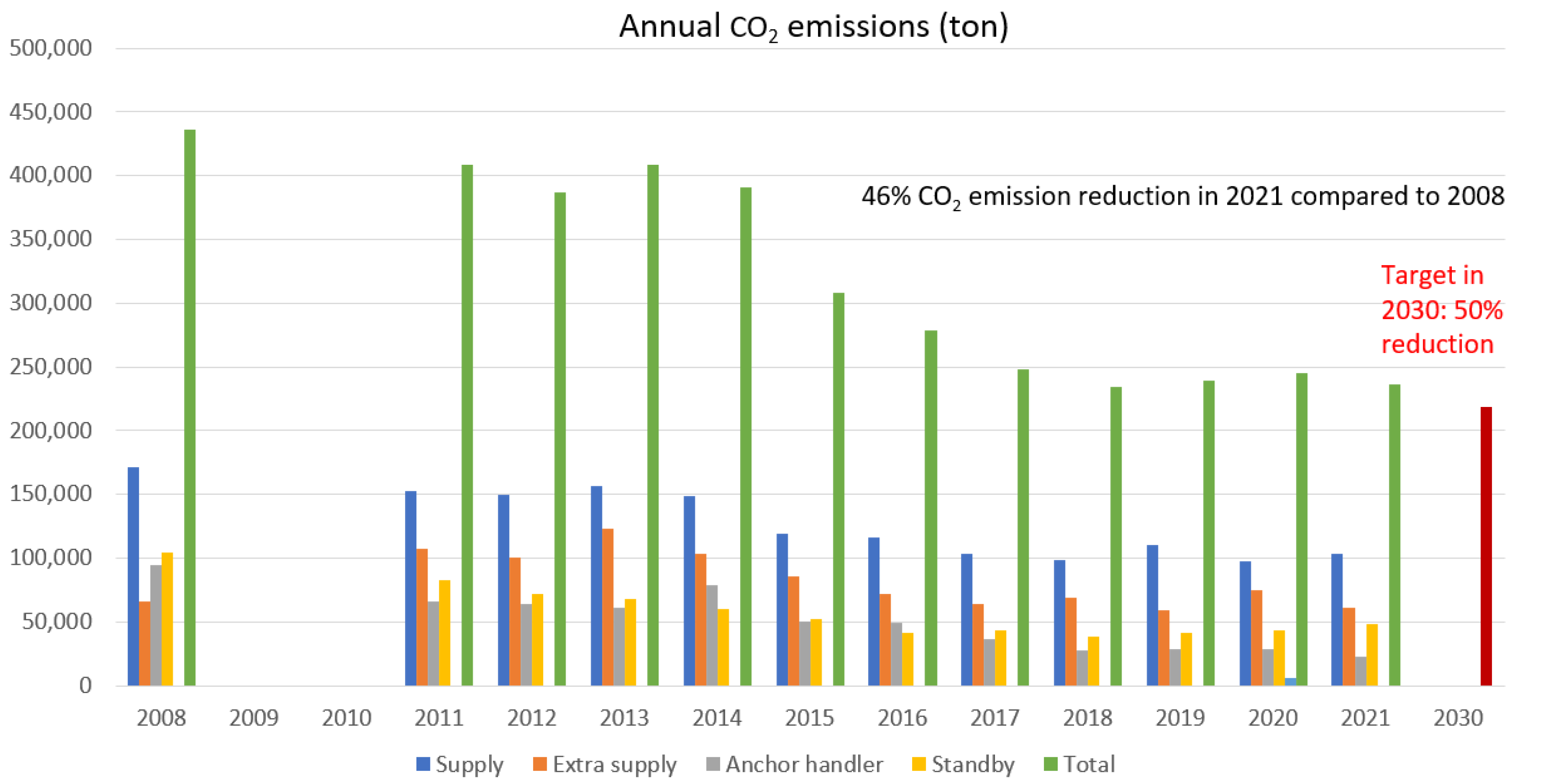



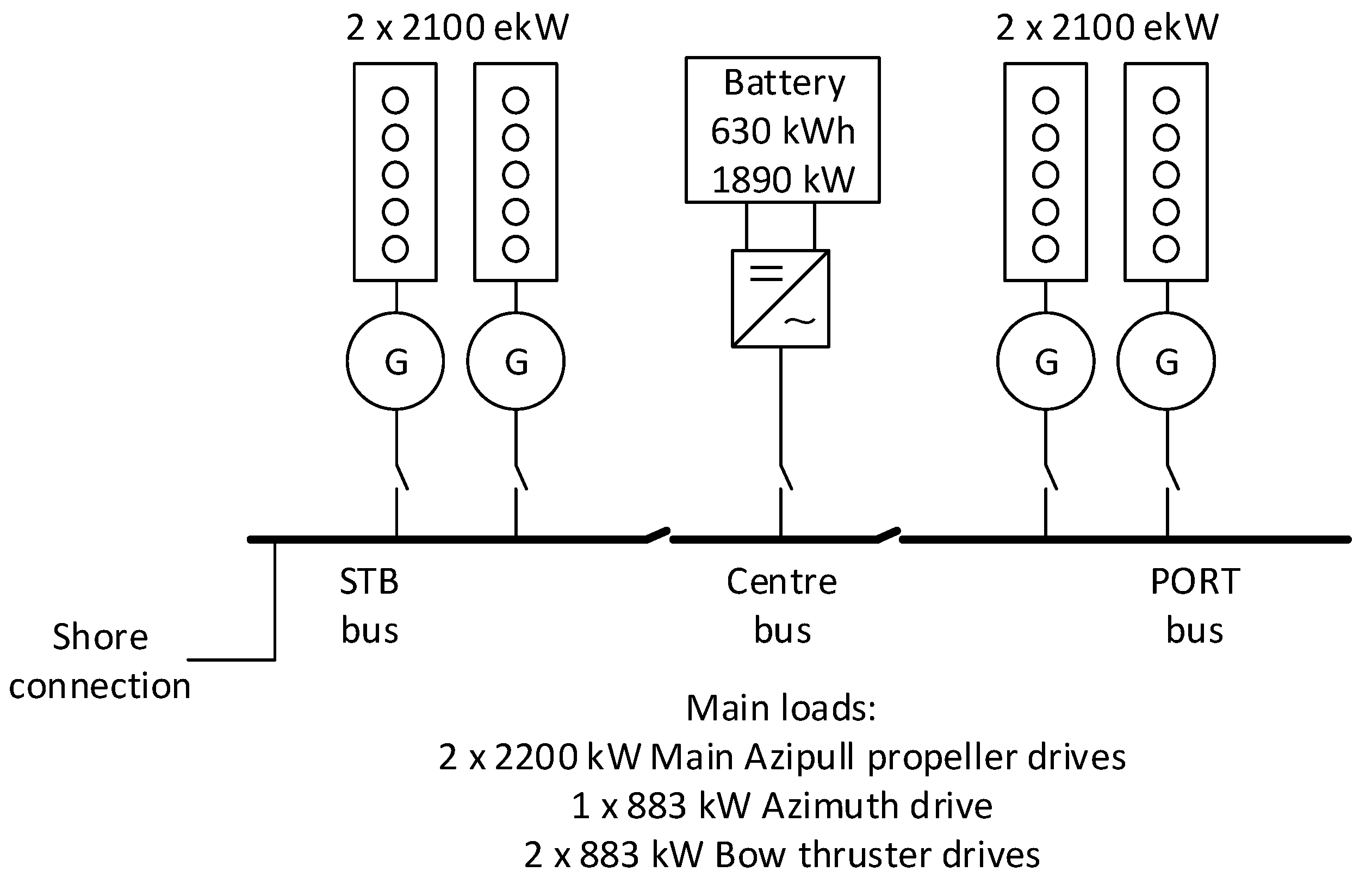

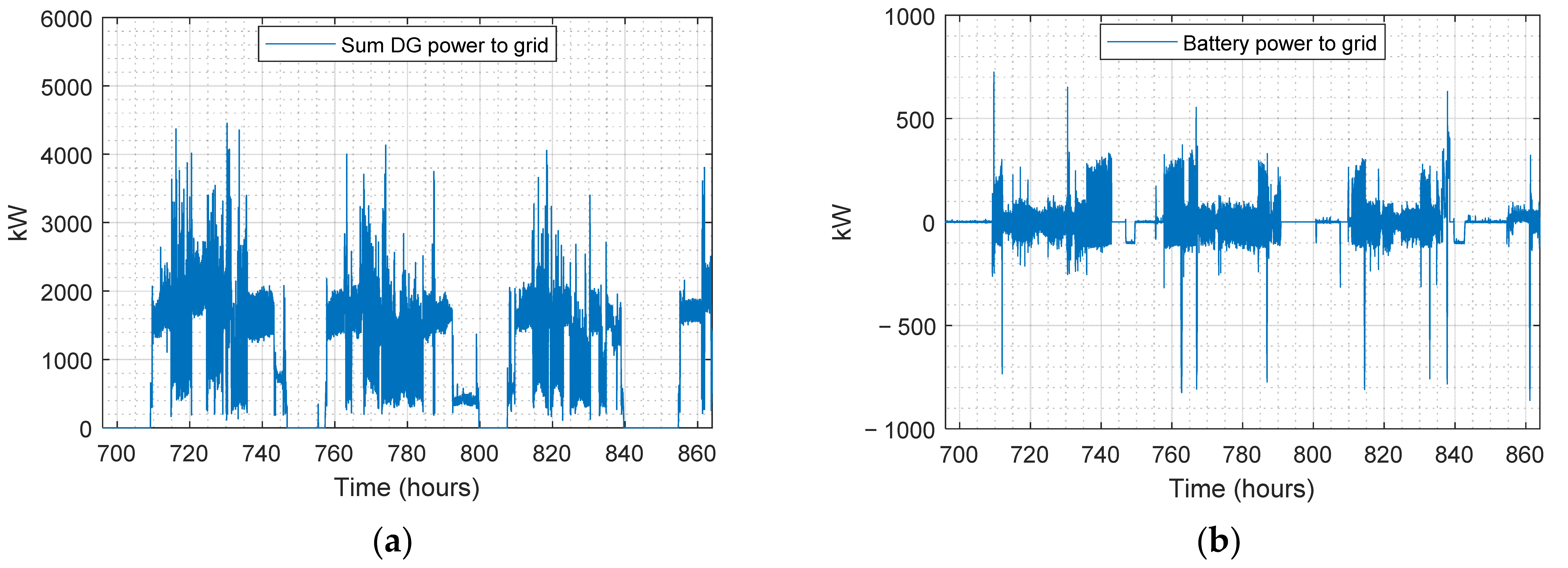
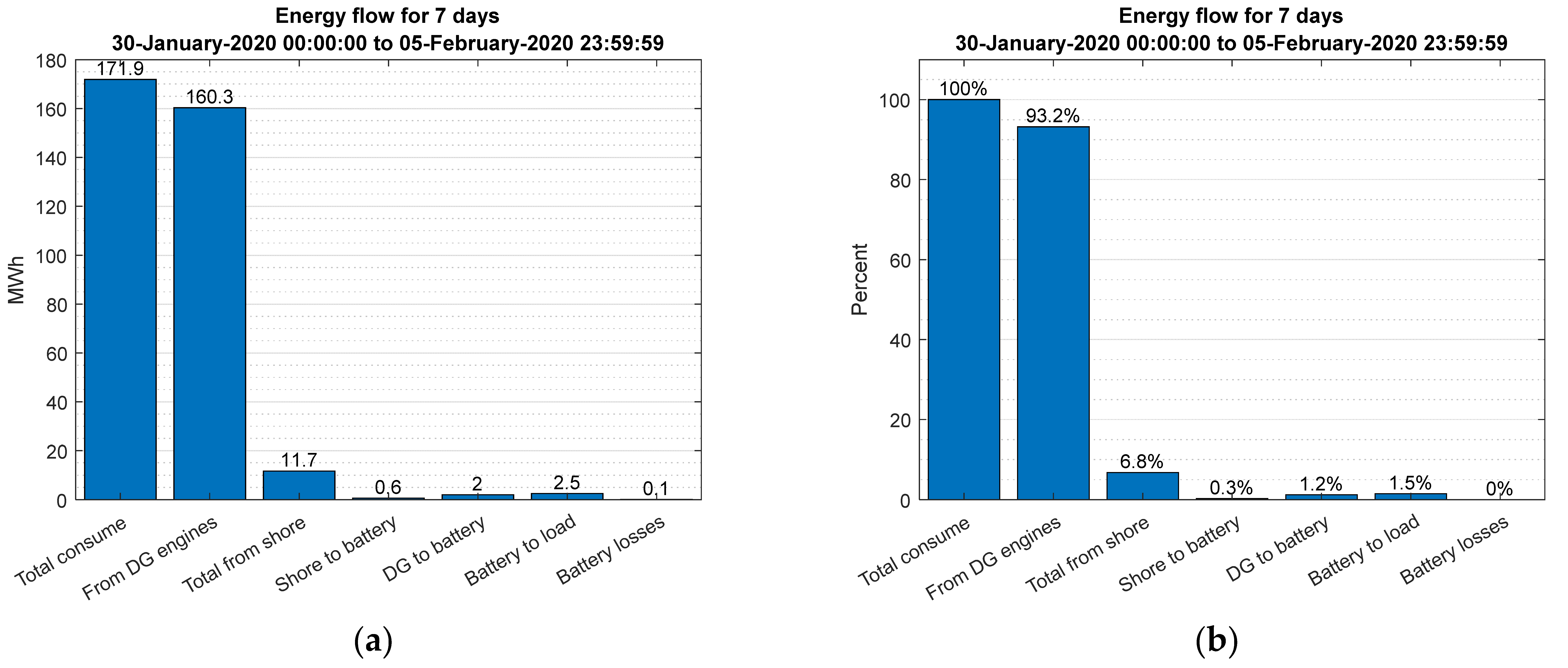
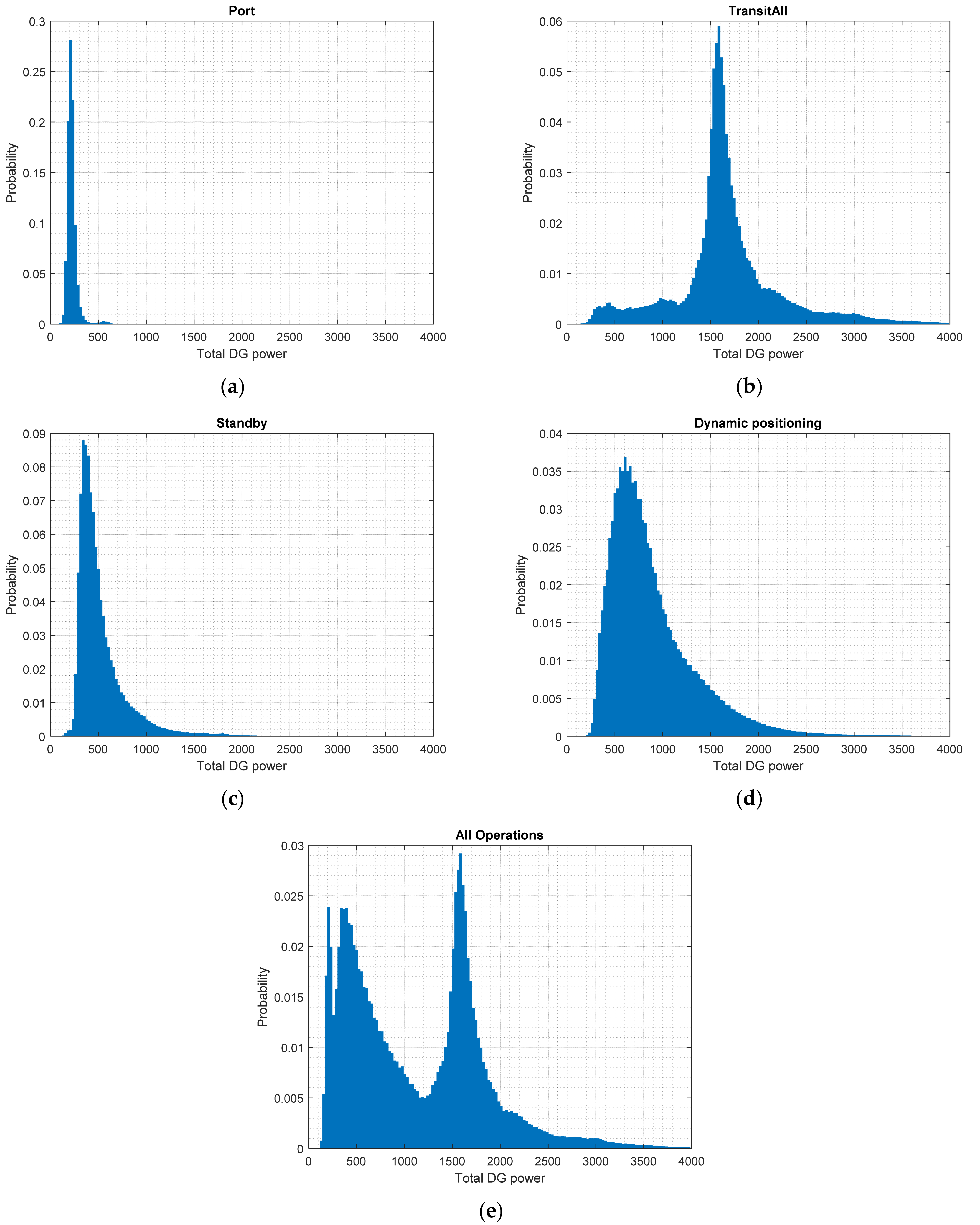

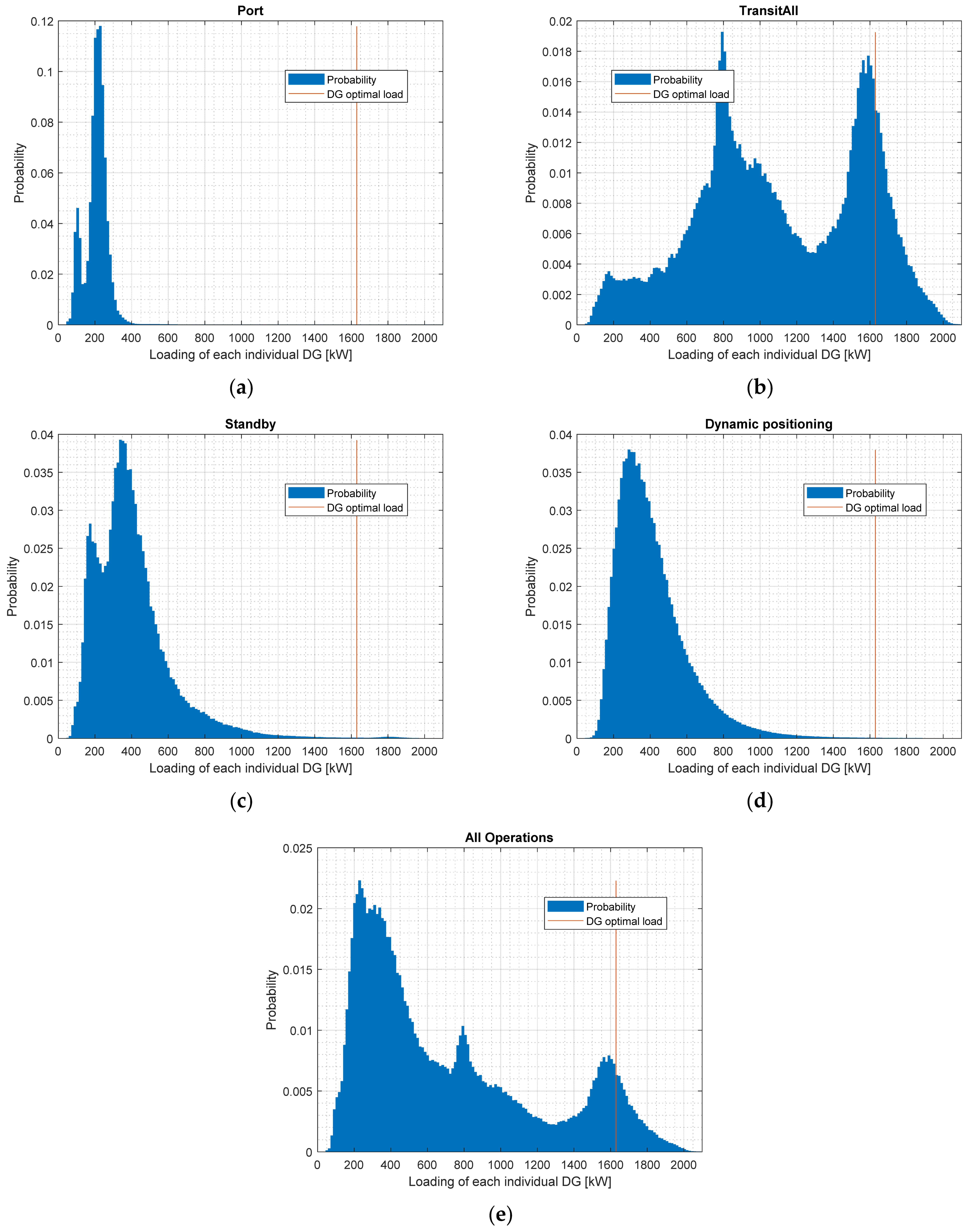
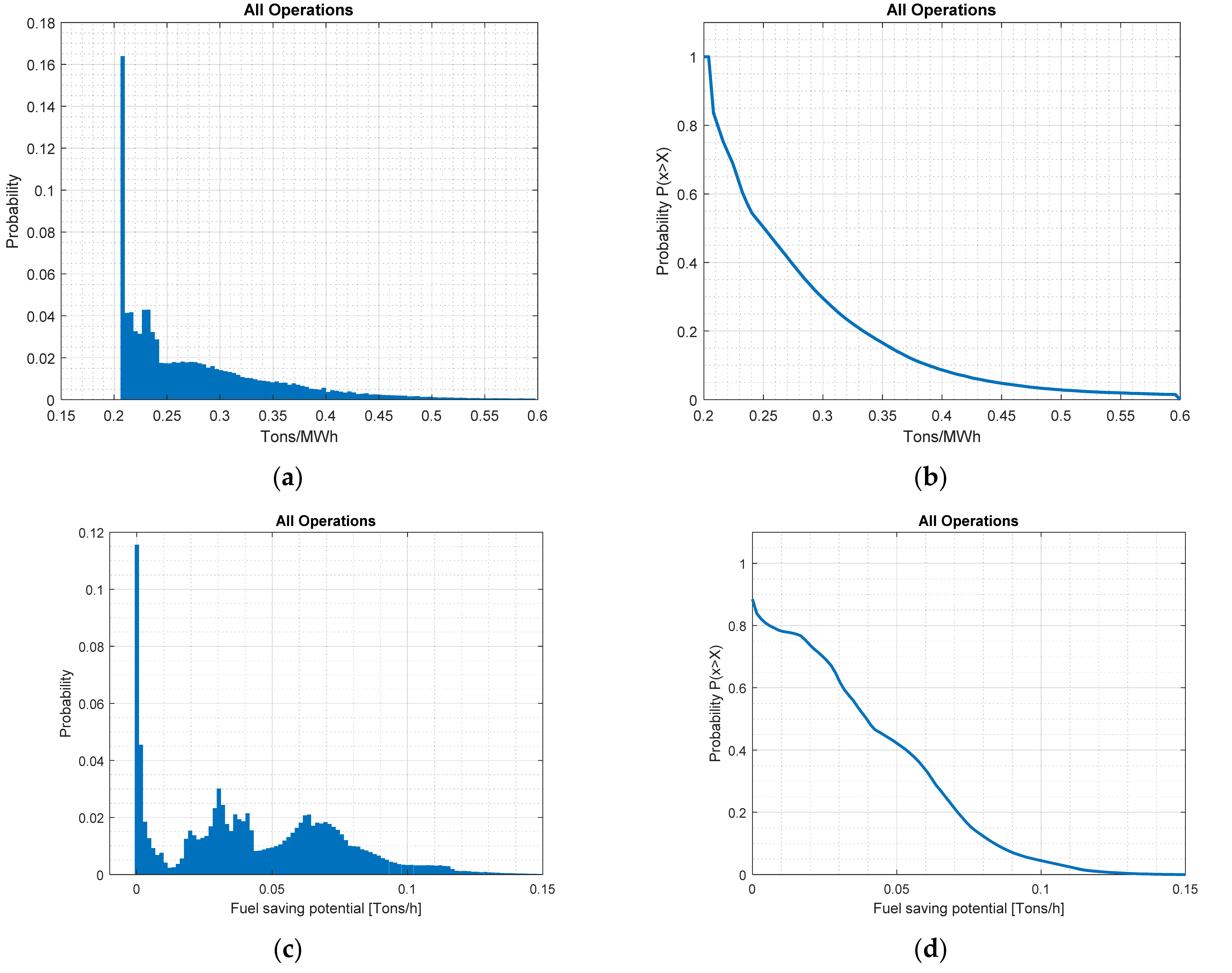
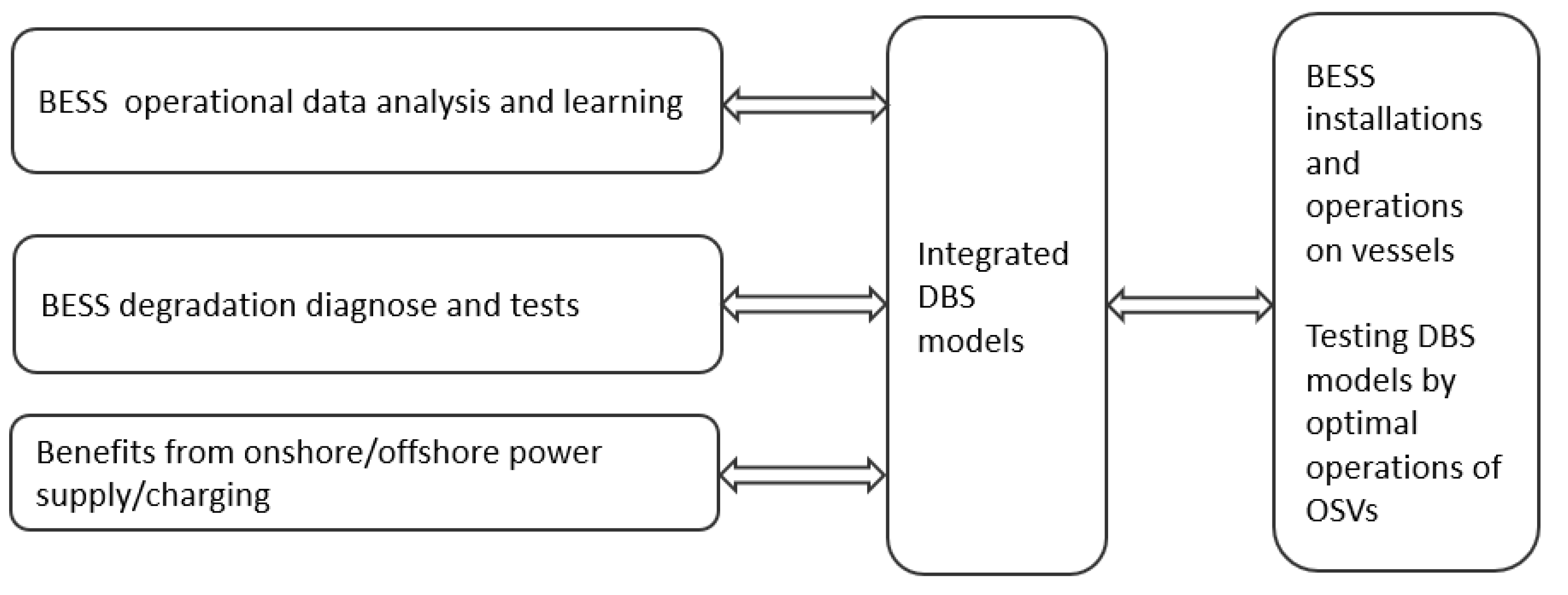
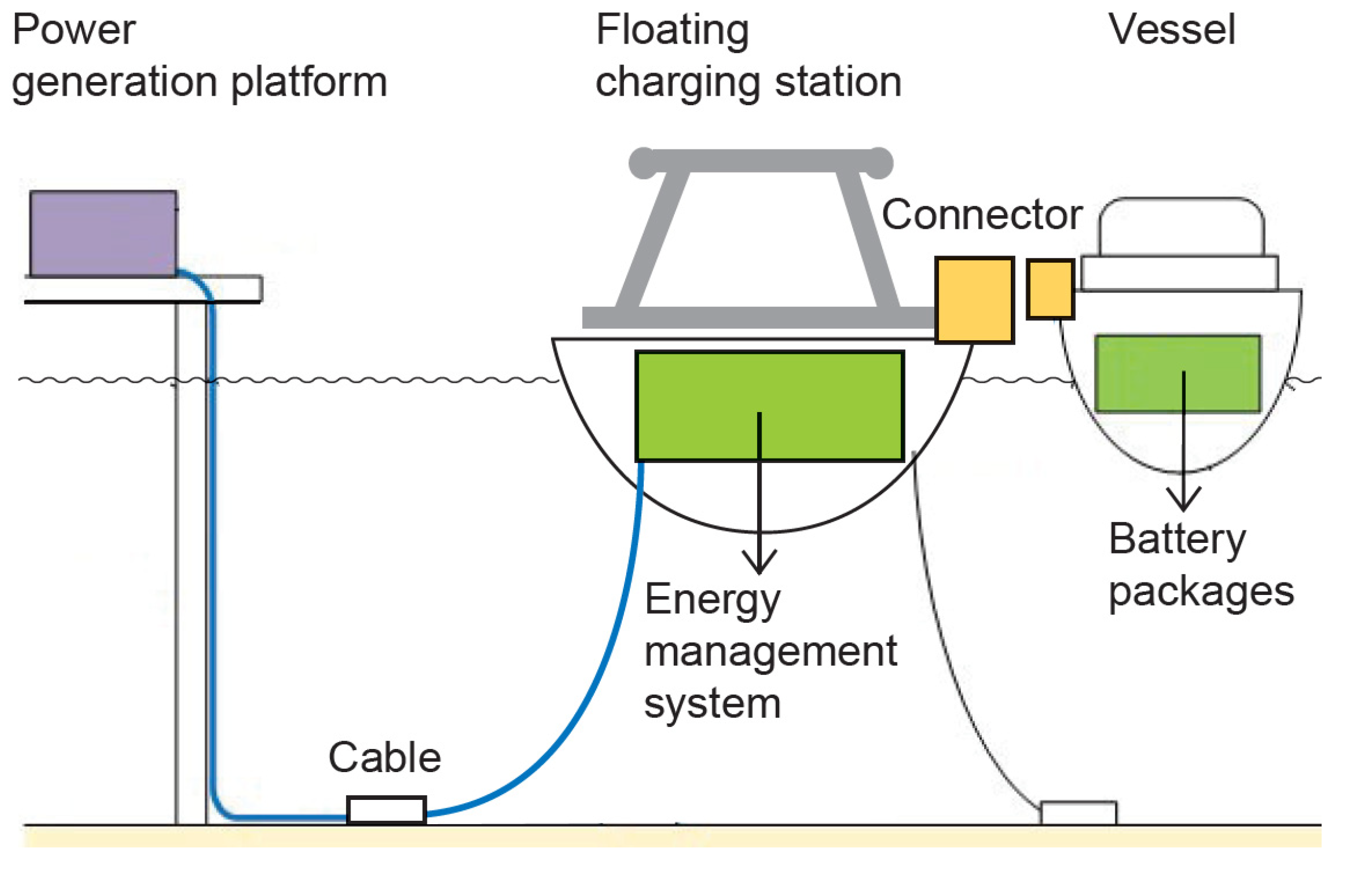
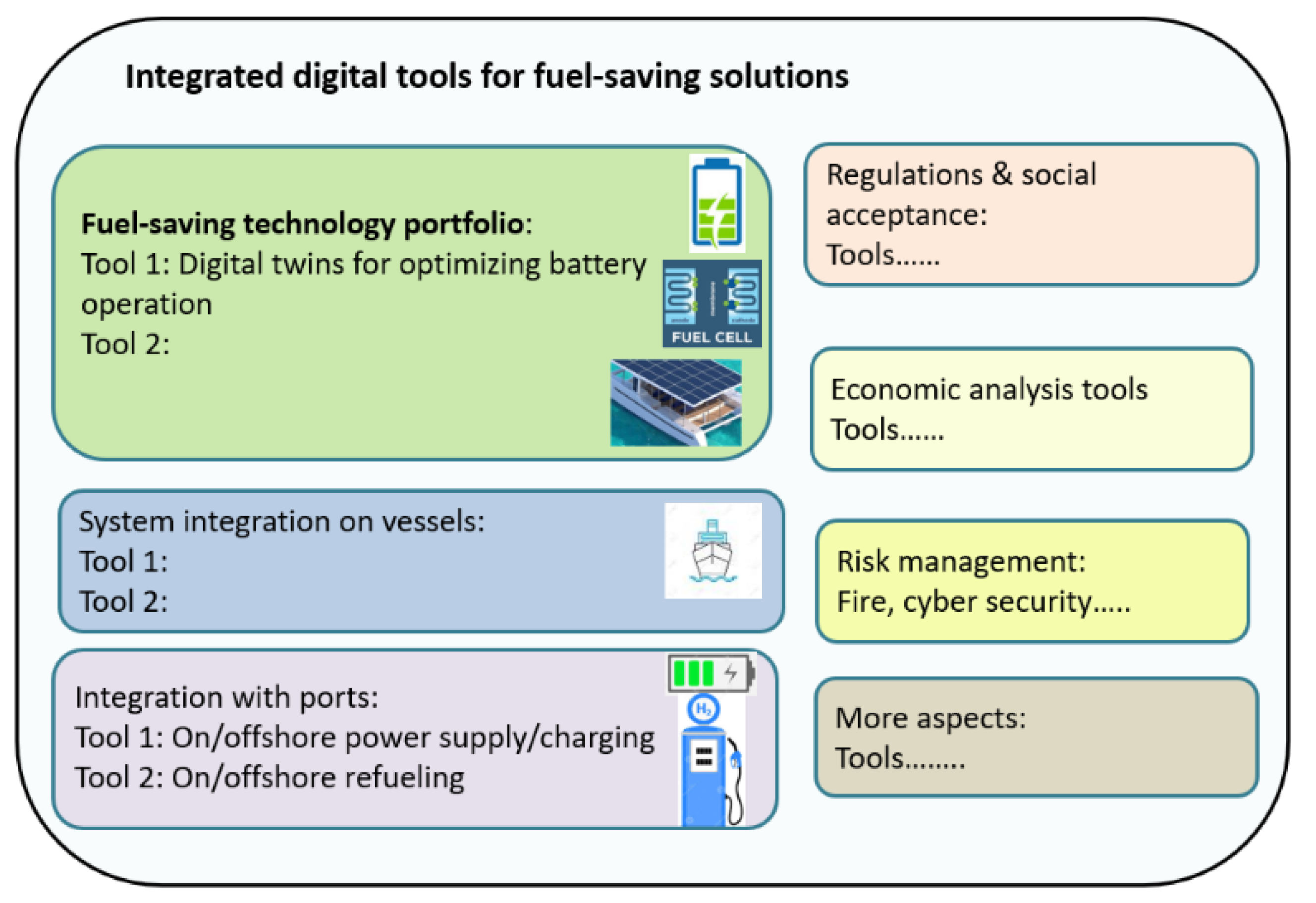
| Car Ferry Fully Electric | Passenger Ferry Hybrid | Fishing Vessel Hybrid | OSVs Hybrid | |
|---|---|---|---|---|
| Operation and maintenance cost reductions | 80% | 35–50% | 50–75% | 35–55% |
| Fuel saving | 100% | 15–40% | 20–25% | 20–60% |
| CO2 emission reductions | 95% | 15–40% | 20–25% | 20–60% |
| NOx emission reductions | 95% | 30–60% | 30–40% | 30–60% |
| Major Aspects | Description | Time | Costs |
|---|---|---|---|
| Installation plans | Development of safe and cost-efficient installation plans (CBA study and contracting BESS supplier, booking shipyard and OSV retrofitting plans, arranging contracts, etc.) | 1 or 2 years | Two persons for half year 0.1 M€ (3%) |
| Preparations at shipyard | Booking shipyard for retrofitting OSV | Several months | 0.1 M€ (3%) |
| Preparations on OSV | Preparing BESS interactions (including mechanical, thermal, electrical grid and communications) | Several months | 0.2 M€ (6%) |
| Delivery of a 630 kWh containerized BESS | Battery pack production, system integration and containerized BESS | Several months | 1 M€ (29%) |
| Installation and commissioning | Execution of retrofit of BESS on OSV | One month | 1 M€ (29%) + 0.6 M€ (18%) in loss of OSV commercial renting income. |
| Tests, certifications and flag registrations | Tests including FMEA and new flag registration | One week | 0.4 M€ (12%) |
| Total costs | : 3.4 M€ | ||
| Scenarios | Description of Scenarios |
|---|---|
| 1: Similar vessels | Facilitating technical and operational transferability among similar vessels including the standardization of BESS designs, certifications (and flags, safety) and documentations of crew training programs; control operational systems easy for crew. |
| 2: Across sectors | Applying the electrification experiences of OSVs for the oil/gas industry and cruise ships to other sectors (e.g., 450 GW OWFs in Europe in 2050 and OWFs in US, promoting blue growth) |
| 3: Across regions | Transferring the experiences gained from electrification of OSVs and ferries in Scandinavian countries to OSVs and ferries in all regions in Europe |
| 4: Towards future | Advancing hybrid OSVs to further lower emissions and pave the way towards zero emissions ships |
Publisher’s Note: MDPI stays neutral with regard to jurisdictional claims in published maps and institutional affiliations. |
© 2022 by the authors. Licensee MDPI, Basel, Switzerland. This article is an open access article distributed under the terms and conditions of the Creative Commons Attribution (CC BY) license (https://creativecommons.org/licenses/by/4.0/).
Share and Cite
He, W.; Mo, O.; Remøy, A.; Valøen, L.O.; Såtendal, H.; Howie, A.; Vie, P.J.S. Accelerating Efficient Installation and Optimization of Battery Energy Storage System Operations Onboard Vessels. Energies 2022, 15, 4908. https://doi.org/10.3390/en15134908
He W, Mo O, Remøy A, Valøen LO, Såtendal H, Howie A, Vie PJS. Accelerating Efficient Installation and Optimization of Battery Energy Storage System Operations Onboard Vessels. Energies. 2022; 15(13):4908. https://doi.org/10.3390/en15134908
Chicago/Turabian StyleHe, Wei, Olve Mo, Alfred Remøy, Lars O. Valøen, Helge Såtendal, Aaron Howie, and Preben J. S. Vie. 2022. "Accelerating Efficient Installation and Optimization of Battery Energy Storage System Operations Onboard Vessels" Energies 15, no. 13: 4908. https://doi.org/10.3390/en15134908
APA StyleHe, W., Mo, O., Remøy, A., Valøen, L. O., Såtendal, H., Howie, A., & Vie, P. J. S. (2022). Accelerating Efficient Installation and Optimization of Battery Energy Storage System Operations Onboard Vessels. Energies, 15(13), 4908. https://doi.org/10.3390/en15134908






